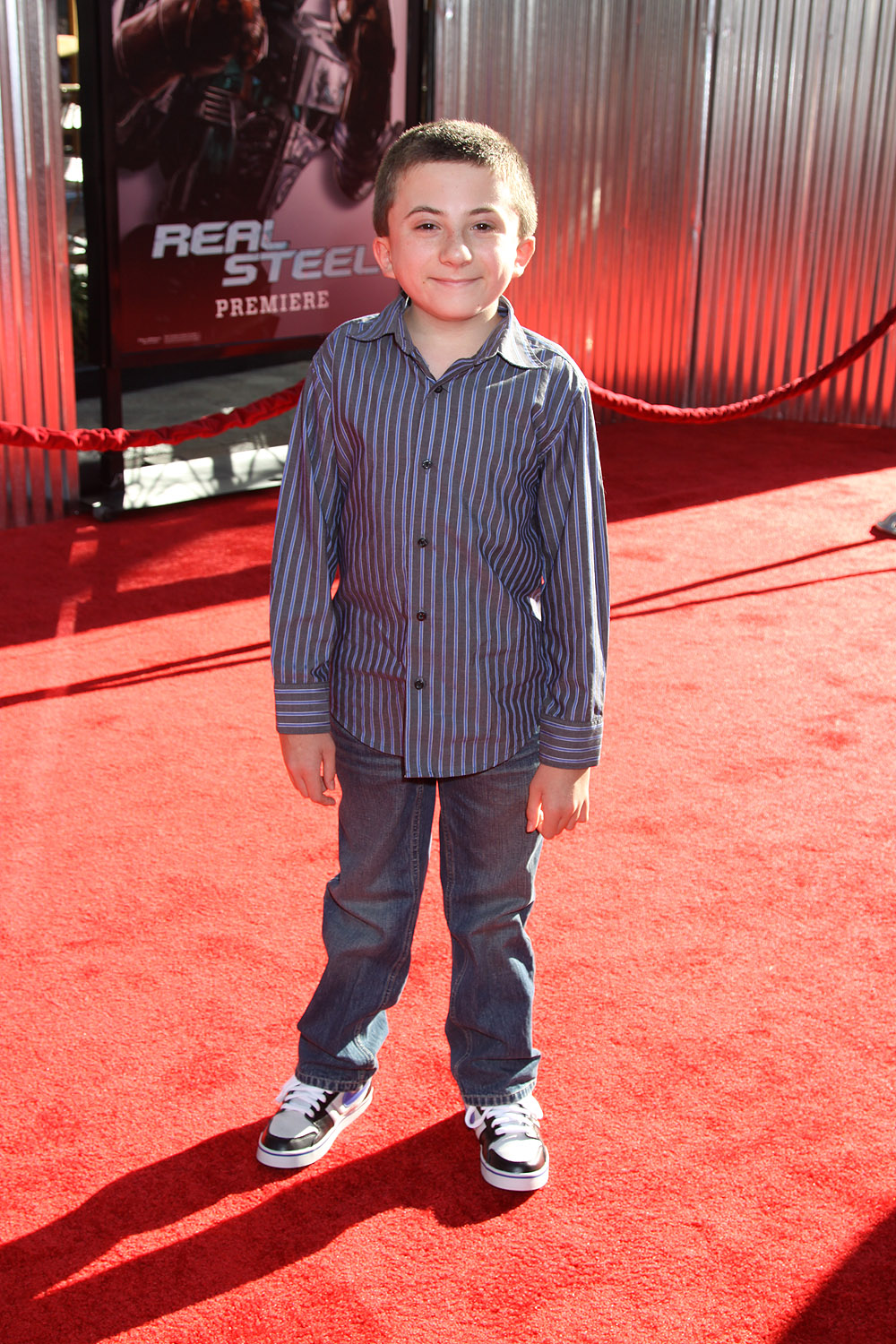A Comprehensive Guide To Atticus Shaffers Condition
What is the medical condition affecting the renowned actor, Atticus Shaffer? The answer lies in osteogenesis imperfecta, a genetic disorder characterized by brittle bones prone to frequent fractures, often termed as "brittle bone disease."
Osteogenesis imperfecta, affecting 1 in 15,000 to 20,000 individuals, disrupts the body's natural production of collagen, a vital protein responsible for bone strength and flexibility. Sufferers of this condition endure weakened and fragile bones prone to fractures with minimal trauma or even in the absence of any apparent cause.
Beyond the skeletal implications, osteogenesis imperfecta can also impact other bodily systems. Hearing loss, dental problems, and muscle weakness may accompany the condition. However, its severity varies among individuals, ranging from mild to severe forms.
Understanding Atticus Shaffer's condition, osteogenesis imperfecta, provides insights into this rare disorder and highlights the challenges faced by those affected. It emphasizes the importance of early diagnosis and ongoing medical care, including specialized treatments and therapies, to improve overall well-being and quality of life.
Atticus Shaffer's Condition
Atticus Shaffer's condition, osteogenesis imperfecta, presents unique challenges that impact various aspects of his life. Here are five key dimensions to consider:
- Bone Health: Brittle bones prone to frequent fractures, affecting mobility and daily activities.
- Growth and Development: Impaired growth, skeletal deformities, and delayed motor skills.
- Dental Issues: Weak and discolored teeth, requiring specialized dental care.
- Hearing Loss: Progressive hearing loss due to bone abnormalities in the inner ear.
- Muscle Weakness: Limited muscle strength and endurance, affecting overall mobility and coordination.
Understanding these aspects provides a comprehensive view of the condition's impact on Atticus Shaffer. The interplay between bone health, growth, and development highlights the complex challenges he faces. Dental issues and hearing loss add further dimensions to his experience, while muscle weakness affects his physical capabilities. Together, these aspects underscore the need for ongoing medical care, specialized treatments, and adaptive strategies to support Atticus Shaffer's well-being and quality of life.
| Name | Date of Birth | Birthplace | Occupation |
|---|---|---|---|
| Atticus Shaffer | June 19, 1998 | Santa Clarita, California | Actor |
Bone Health
At the core of Atticus Shaffer's condition lies the fragility of his bones. Osteogenesis imperfecta disrupts the body's natural production of collagen, a vital protein responsible for bone strength and flexibility. As a result, individuals like Atticus Shaffer endure weakened and fragile bones prone to fractures with minimal trauma or even in the absence of any apparent cause.
This heightened susceptibility to fractures significantly impacts mobility and daily activities. Simple movements that most people take for granted, such as walking, running, or playing sports, can pose significant challenges and risks for those with osteogenesis imperfecta. The constant fear of fractures can limit participation in everyday activities and social interactions, affecting overall quality of life.
Understanding the intricate connection between bone health and Atticus Shaffer's condition is paramount for devising appropriate medical interventions and supportive strategies. Specialized treatments, including physical therapy, bracing, and surgical procedures, aim to strengthen bones, prevent fractures, and enhance mobility. Moreover, ongoing monitoring and regular check-ups are essential to proactively address any potential complications and ensure optimal bone health.
Growth and Development
The interplay between "Growth and Development: Impaired growth, skeletal deformities, and delayed motor skills" and "atticus shaffer condition" presents a unique set of challenges for individuals like Atticus Shaffer. Osteogenesis imperfecta, the underlying cause of his condition, affects bone growth and development, leading to skeletal deformities and impaired motor skills.
Impaired growth in osteogenesis imperfecta can manifest in short stature and underdeveloped bones. Skeletal deformities, such as bowing of the legs or curvature of the spine, can arise due to the weakened bone structure. These deformities can not only affect mobility but also impact overall physical development and self-esteem.
Delayed motor skills are another common challenge associated with osteogenesis imperfecta. The fragility of bones and the risk of fractures can limit physical activity and movement, hindering the development of motor skills such as walking, running, and fine motor coordination. This delay can affect daily activities, social interactions, and overall participation in physical education and sports.
Understanding the connection between growth and development and Atticus Shaffer's condition is crucial for developing appropriate interventions and support systems. Regular monitoring of growth and development, along with specialized therapies and treatments, can help address skeletal deformities, improve motor skills, and enhance overall physical well-being.
Dental Issues
The connection between "Dental Issues: Weak and discolored teeth, requiring specialized dental care" and "atticus shaffer condition" highlights a significant aspect of osteogenesis imperfecta's impact on overall health and well-being. The weakened and fragile bones associated with this condition extend to the dental structure, resulting in dental issues that require specialized care.
Individuals with osteogenesis imperfecta often have weaker tooth enamel, making their teeth more prone to decay and discoloration. The fragility of their bones also increases the risk of dental fractures, even during routine activities such as eating or brushing. Furthermore, the dentin, the layer beneath the enamel, may be thinner and less mineralized, leading to sensitivity and pain.
Specialized dental care is crucial for managing dental issues in osteogenesis imperfecta. Regular dental check-ups, fluoride treatments, and sealants can help prevent cavities and strengthen teeth. In some cases, dental crowns or bridges may be necessary to protect and restore damaged teeth. Orthodontic treatment may also be recommended to correct any misalignment or bite issues.
Hearing Loss
The connection between "Hearing Loss: Progressive hearing loss due to bone abnormalities in the inner ear" and "atticus shaffer condition" highlights a significant aspect of osteogenesis imperfecta's impact on sensory function. This genetic disorder affects the formation and structure of bones, including the delicate bones of the inner ear responsible for hearing.
In individuals with osteogenesis imperfecta, the abnormal bone growth can lead to malformations or structural defects in the inner ear. These abnormalities can disrupt the transmission of sound waves, resulting in progressive hearing loss. The severity of hearing loss can vary depending on the extent of the bone abnormalities.
Understanding the connection between hearing loss and osteogenesis imperfecta is crucial for early detection and appropriate intervention. Regular hearing tests are recommended for individuals with this condition to monitor any changes in hearing ability. Hearing aids or assistive listening devices can be beneficial in managing hearing loss and ensuring optimal communication.
Muscle Weakness
Individuals with osteogenesis imperfecta, such as Atticus Shaffer, may experience muscle weakness as a result of the condition's impact on bone growth and development. The weakened bones and skeletal deformities can limit mobility and physical activity, affecting muscle strength and endurance.
- Reduced Bone Support: Weakened bones provide less support to the muscles, limiting their ability to generate force and perform movements effectively.
- Altered Muscle Development: Limited mobility and physical activity can hinder muscle growth and development, resulting in decreased muscle mass and strength.
- Pain and Discomfort: Fractures and skeletal deformities can cause pain and discomfort, further restricting movement and muscle function.
- Coordination Challenges: Muscle weakness and impaired mobility can affect coordination, making it difficult to perform complex movements and maintain balance.
Understanding the connection between muscle weakness and osteogenesis imperfecta is crucial for developing appropriate interventions and support systems. Physical therapy, muscle-strengthening exercises, and assistive devices can help improve muscle function, mobility, and overall quality of life for individuals with this condition.
Frequently Asked Questions about Osteogenesis Imperfecta
Osteogenesis imperfecta, also known as "brittle bone disease," is a genetic condition that affects bone development and strength. Here we address some common concerns and misconceptions about this condition.
Question 1: What is osteogenesis imperfecta?
Osteogenesis imperfecta is a genetic disorder that affects the body's production of collagen, a protein that provides strength and flexibility to bones. As a result, individuals with this condition have bones that are fragile and prone to fractures.
Question 2: What are the symptoms of osteogenesis imperfecta?
Symptoms can vary depending on the severity of the condition, but may include frequent fractures, bone deformities, short stature, muscle weakness, hearing loss, and dental problems.
Question 3: How is osteogenesis imperfecta diagnosed?
Diagnosis typically involves a physical examination, family history, and genetic testing to confirm the presence of the genetic mutation responsible for the condition.
Question 4: Is there a cure for osteogenesis imperfecta?
Currently, there is no cure for osteogenesis imperfecta, but treatments can help manage symptoms and improve quality of life. Treatments may include medication, physical therapy, bracing, and surgery.
Question 5: How does osteogenesis imperfecta affect daily life?
Individuals with osteogenesis imperfecta may face challenges with mobility, daily activities, and social interactions due to their fragile bones and other symptoms.
Question 6: What is the life expectancy for people with osteogenesis imperfecta?
With proper care and management, most individuals with osteogenesis imperfecta can live full and active lives. Life expectancy varies depending on the severity of the condition and the presence of any complications.
Summary of key takeaways or final thought: Osteogenesis imperfecta is a complex condition that can affect various aspects of life. Understanding the condition, its symptoms, and available treatments can help individuals and their families navigate the challenges and live fulfilling lives.
Transition to the next article section: For more information on osteogenesis imperfecta, including support groups and resources, please refer to the following section.
Conclusion
Atticus Shaffer's condition, osteogenesis imperfecta, underscores the challenges faced by individuals with rare and complex genetic disorders. Understanding the impact of this condition on bone health, growth, development, and overall well-being is crucial for providing appropriate medical care and support.
Osteogenesis imperfecta serves as a reminder of the resilience and adaptability of the human spirit. Despite the physical limitations and challenges associated with the condition, individuals like Atticus Shaffer continue to strive for fulfilling and meaningful lives. Their stories inspire us to embrace diversity, promote inclusivity, and foster a society that values and supports all individuals, regardless of their abilities or conditions.



Detail Author:
- Name : Richmond Hessel
- Username : benton50
- Email : cdonnelly@gmail.com
- Birthdate : 1998-04-02
- Address : 5779 Crist Orchard Apt. 523 West Wendellshire, GA 62950
- Phone : +1.757.705.3075
- Company : Gutkowski Ltd
- Job : Sketch Artist
- Bio : Quidem animi inventore ipsa culpa velit. Dolorum corporis voluptatum porro corrupti praesentium enim delectus. Commodi quia minima non nulla quae autem distinctio.
Socials
tiktok:
- url : https://tiktok.com/@junior_dev
- username : junior_dev
- bio : Voluptas et non asperiores vitae iusto ipsa aliquid quia.
- followers : 5880
- following : 2867
linkedin:
- url : https://linkedin.com/in/junior_xx
- username : junior_xx
- bio : Est laudantium commodi dicta ea tenetur ut.
- followers : 6566
- following : 2230
facebook:
- url : https://facebook.com/junior1419
- username : junior1419
- bio : Illum quis suscipit repellendus enim dolorem.
- followers : 2730
- following : 2720
twitter:
- url : https://twitter.com/junior9578
- username : junior9578
- bio : Aut consequatur consequatur ipsam qui. Nihil sequi ratione facere ut ipsa. Quas corporis repellendus minima et doloribus quo voluptas.
- followers : 3857
- following : 2362